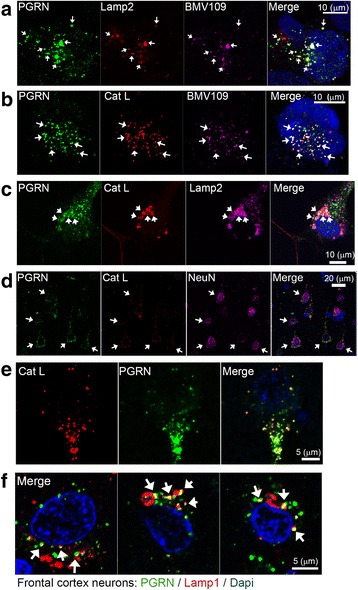Fig. 2.

Cellular PGRN co-localize with Cat L and active cysteine cathepsins in lysosomes. a Immunofluorescence (IF) analysis of HEK293 cells showing the localization of PGRN (green), Lamp2 (red) and active cysteine cathepsins (BMV109 activity probe; violet). Nuclei in merged images were visualized by Hoechst 33,342 staining. b IF analysis of PGRN (green), Cat L (red) and BMV109 (violet) in HEK293 cells. c IF analysis of human wild-type iPSC-neurons showing the localization of PGRN (green), Cat L (red), and Lamp2 (violet). d IF analysis of neuronal cells in the frontal cortex of a sporadic FTLD patient showing the localization of PGRN (green), Cat L (red), and NeuN (violet). e High magnification IF analysis of Cat L (red) and PGRN (green) in a cortical neuron from the frontal cortex. f High magnification IF analysis of 3 representative cortical neurons in the frontal cortex of a sporadic FTLD patient showing the localization of PGRN (green), Lamp1 (red), and the nucleus (DAPI; blue). The white arrows show triple co-localization (a – c) or co-localization of PGRN and Cat L in NeuN position cells (d)
